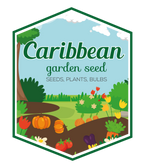
Homemade Pickles' Cucumber Seeds - 'Heavy yielding variety
FAST & FREE SHIPPING
Over 90% of our orders are processed and ship out by next business day.
We are currently processing and shipping most orders within 1-3 business days. (backorders not included) Due to high demand during the peak months of January to May, orders may require additional time for packaging /shipment.
Free shipping for orders over $54.95. Excludes live plants, fresh products And Stackable Black Plastic Nursery Crate
Shipping and handling charges will cover outbound freight and packaging materials. Fees are applicable to all orders, based on total order value pre-tax. Expedited services can be selected at Checkout with extra fees.
- Free shipping to lower 48 states on orders $54.95+
- (Most Items), excluding live plants, plant bulbs, and black plastic nursery crate.
- Safe Seed Pledge
- Satisfaction Guaranteed
- Select your desired size and/or color from the available options.
Homemade Pickles features vigorous plants with excellent disease resistance and high yields. Medium-green fruits with small, white spines. Can be harvested at 1 1/2” long. 55 day. 1,000 seeds/oz.; 2-3 lbs./acre; 7 days, 72°F
Organic Homemade Pickles is an heirloom cucumber that has been used for years to make perfect pickles. Superb blocky shape with flattened ends fit nicely into jars. Vigorous grower that provides solid, crisp, and flavorful cucumbers.
Start early indoors and transplant after 3-5 weeks or sow directly outside when soil temperature reaches 72°F.
Historians generally agree that the first cucumbers grew in India's Himalyan Mountains over 3,000 years ago. From this region they expanded into Greece and Rome; the Romans most likely spread this vegetable to the rest of Europe. The cucumber was widely grown by native Americans through the influence of the Spanish and other explorers. Cucumbers continue to be a vital part of traditional cuisine in Russia and many parts of Asia; the greatest variety of colors and shapes of this vegetable can still be found in its Asian birthplace.
Homemade Pickles Cucumber Germination: Cucumbers do not take well to transplanting, so either start them early in peat pots or plant them directly. Start them indoors about 2 weeks before frost, placing 3-4 seeds 1/2" deep in the pot. Keep the air temperature at least 80 degrees F. When two or three leaves appear on each plant, cut off all but the strongest plant with a scissors. Before planting them, "harden" the seedlings by setting them outside during the day. They should be planted no sooner than a week after the last spring frost, when the air temperatures consistently average 65-75 degrees F. For planting them in a hill, place three seedlings or 7-8 seeds in each hill; space hills 4-5' apart. If rows are preferrable, plant seedlings 1' apart or place 5 seeds within 1' and later thin them. Cucumbers love heat and cannot endure even a light frost; if cold temperatures threaten, cover the seedlings. Since cucumbers love to climb, providing a trellis will save space in your garden and produce straighter cucumbers that are easier to pick; however, the vines will simply spread out over the ground if no trellis is provided. Some gardeners plant their cucumbers with corn, since the two plants benefit each other and the cucumbers will climb the corn. Planting several radishes with cucumbers seems to repel damaging cucumber beetles; however, cucumbers do not like being planted near potatoes or aromatic herbs.
Growing Cucumber Seeds: Homemade Pickles cucumbers tend to be very disease resistant. Moisture is the key to growing excellent cucumbers; keep the soil consistently moist. When the vines have developed, apply mulch or straw to conserve moisture and control weeds. Watch out for cucumber beetles, and remove them immediately to prevent damage.
Harvesting Homemade Pickles Cucumber: This dark green, white spined variety of cucumber works very well for pickling, though excellent as well for fresh eating at a bigger size. If picked consistently all season, the yield will be very high. When the blossom end of the cucumber begins to turn yellow, this indicates that the cucumber has passed its prime. Cucumbers store very well in the refrigerator.
HOW TO GROW GUIDE
LET OUR CUSTOMER SPEAK FOR US

![[Seeds] - Caribbeangardenseed](http://caribbeangardenseed.com/cdn/shop/files/gift-card-gift-card-1_1024x1024_dfa857db-9150-4315-a362-7f0bb3fb9c47_60x28.png?v=1722895789)







